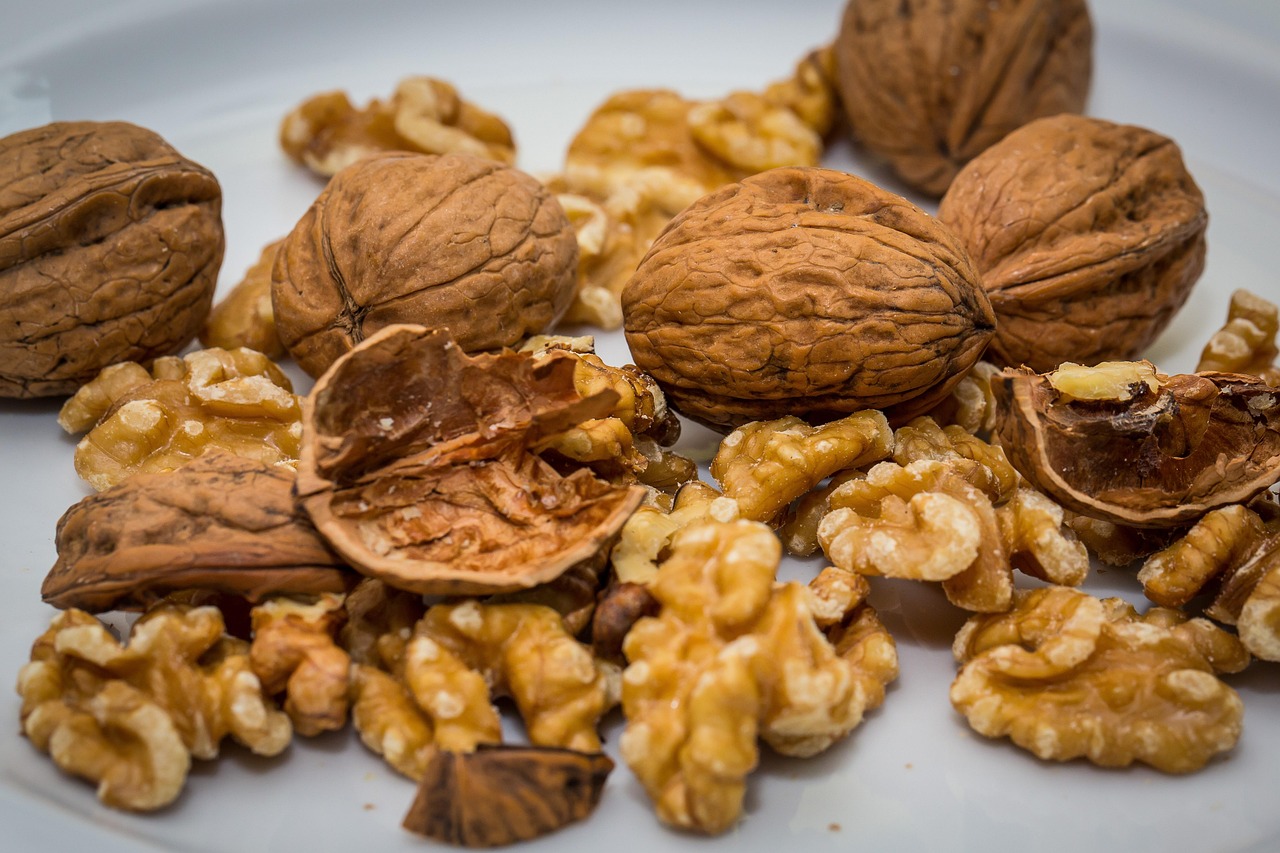Recipe: Roasted Beetroot, Goat’s Cheese & Wild Walnut Salad
Wild Walnuts: The Forgotten Autumn Superfood for Brain & Gut Health

If you’re lucky enough to spot a walnut tree, you’ll probably smell it before you see it. The crushed leaves have a distinct, spicy scent — a hint that you’ve found something special.
Where & When to Find Them
- Season: Mid-September to early November is peak walnut season in the UK.
- Where: You’ll often find them in old gardens, village greens, and country lanes — the Common (Juglans regia) walnut trees planted decades ago still drop their bounty every autumn.
- What to Look For:
- Green husks that turn brown and split open when the nut is ripe.
- Walnuts that have fallen naturally to the ground.
- Firm, uncracked shells with no mould or soft spots.
Harvest Tips
- Wear gloves — the husks stain your fingers brown.
- Pick up fallen nuts and discard any with holes (they may have been nibbled).
- Leave the nuts to dry for 1–2 weeks in a well-ventilated space before cracking. Or if you have a dehydrator, they can be ready in 12 hours.
🌿 Foraging note: Always take modestly — leave some for the wildlife.
Why Walnuts Are So Good for You
Walnuts aren’t just for Christmas. They’re a functional food that supports nearly every system in the body — particularly your gut and brain.
1. Gut Health Powerhouse
Walnuts are rich in prebiotic fibres and polyphenols — natural compounds that feed beneficial bacteria like Lactobacillus and Bifidobacterium.
Research shows that eating walnuts regularly can increase bacterial diversity in the gut — one of the strongest markers of good gut health.
2. Brain & Mood Support
They’re also one of the best plant sources of omega-3 (ALA), which supports brain cell membranes, reduces inflammation, and helps regulate mood.
That’s why I often think of walnuts as the food version of grounding.
3. Hormone Balance & Fertility
Walnuts contain magnesium, zinc, and selenium — all essential for hormone regulation and reproductive health.
They’re an especially smart choice if you’re working on fertility or cycle support naturally.
Recipe: Roasted Beetroot, Goat’s Cheese & Wild Walnut Salad
This salad is everything autumn should be — earthy, tangy, sweet, and deeply satisfying.
It’s also rich in antioxidants, fibre, and healthy fats, making it a perfect gut-nourishing lunch or side dish.
🍴 Ingredients (Serves 2–3)
- 3 medium beetroots (washed, peeled, and cut into wedges)
- 2 tbsp olive oil
- Sea salt & black pepper
- 1 handful of wild or fresh walnuts (roughly chopped)
- 75g soft goat’s cheese
- A few handfuls of mixed leaves (rocket, spinach, watercress)
- 1 tsp honey or balsamic glaze (optional)
🔥 Method
- Roast the beetroot:
- Preheat oven to 200°C. Toss beetroot wedges with olive oil, salt, and pepper. Roast for 30–35 minutes until tender and caramelised.
- Toast the walnuts:
- While the beetroot cooks, toast your walnuts in a dry pan for 3–4 minutes until fragrant. Keep an eye — they burn fast!
- Assemble the salad:
- Arrange your salad leaves in a bowl or on a plate. Add warm beetroot, crumbled goat’s cheese, and toasted walnuts.
- Dress and serve:
- Drizzle with olive oil and a touch of honey or balsamic glaze. Serve warm or room temperature.
Optional Add-ins: Roasted pumpkin, quinoa, or a few slices of pear for sweetness.
A Note on Seasonality and Simplicity
There’s a quiet joy in eating what’s growing around you.
Foraged foods — whether walnuts, chestnuts, or herbs — reconnect us with the cycles of the earth and our own body rhythms.
When we eat seasonally, we’re not just supporting the land — we’re supporting our microbiome, our mood, and our metabolism.
So next time you’re out walking, look up. There might just be a walnut tree waiting to share a little nourishment with you.